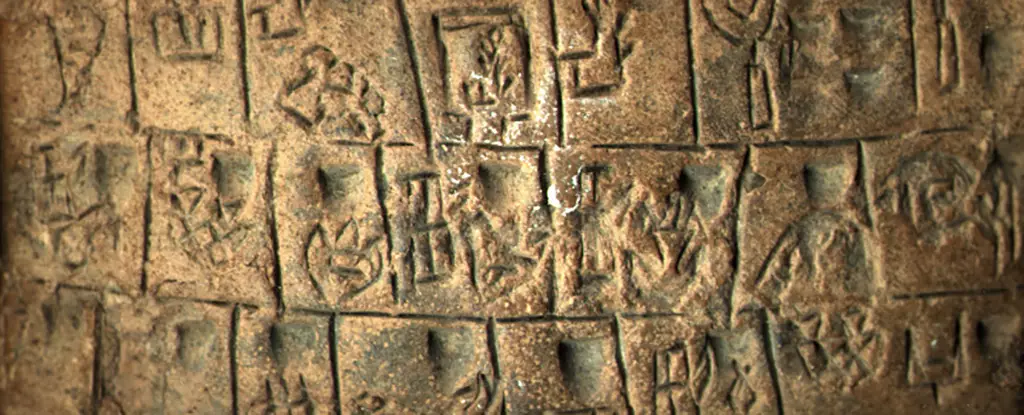Human beings have always harbored an intricate desire to document and share their experiences, emotions, and knowledge. This urge to communicate has taken diverse forms throughout history, but the transition from rudimentary symbols to an organized writing system represents a pivotal moment in human development. While various cultures have contributed to the evolution of writing, recent research from the University of Bologna sheds light on how ancient Mesopotamian cylinder seals may have played a crucial role in the genesis of one of the earliest sophisticated writing formats—proto-cuneiform.
Proto-cuneiform emerged during a fascinating period in Mesopotamian society, characterized by the shift from pre-literate to literate systems. The recent study conducted by a team of Italian philologists, led by Silvia Ferrara, scrutinizes the specific imagery featured on these ancient seals and how such designs potentially influenced the formation of proto-cuneiform symbols. This connection unveils an intricate tapestry of visual communication, suggesting that the artistic expressions on cylinder seals had deeper implications for the development of human expression and the burgeoning need for a formalized writing mechanism.
The study illustrates that symbols once utilized for basic communication, such as representations of textiles and vessels, were methodically crafted into early representations of language. The visual arts thus did not merely exist in isolation; they intertwined with the linguistic innovations of the time, shaping the lexicon that would evolve into a complex system of written expression.
By conducting a thorough comparative analysis between the designs present on ancient cylinder seals and the recognized proto-cuneiform signs, the researchers were able to highlight significant parallels. For instance, common themes such as fringed textiles and netted vessels found in seal imagery exhibit distinctive analogies to their respective proto-cuneiform counterparts. These shared characteristics indicate that early record-keeping methods were likely a predecessor to more advanced written forms, initially stemming from visual symbols used for practical, everyday communications and commerce.
One intriguing detail presented in the research involves the triangular forms and vertical lines used to depict textiles, closely resembling proto-cuneiform signs associated with these objects. Similar patterns emerge in representations of weaving on cylinder seals from prominent Mesopotamian cities, such as Susa and Uruk, reinforcing the notion that the artists of the time were tapping into a visual vocabulary that would later bridge into the written word.
The transition from pictographs to a comprehensive writing system is not merely a change in technology but signifies a pivotal cognitive leap in human evolution. Ferrara contextualizes this transformation, asserting that the emergence of writing represents a fundamental shift from prehistory to history—a critical milestone in human civilization. This development allowed societies the capability to record complex information, plan for the future, and engage in sophisticated trade relations.
In recognizing the profound impact of this change, it becomes evident that the cylinder seals were more than decorative artifacts; they played a crucial role in society, facilitating economic transactions and ensuring accountability through a nascent system of record-keeping. The art of sealing not only preserved memories but laid the groundwork that would ultimately foster communication in its most refined form.
The findings from the University of Bologna highlight an underappreciated yet significant connection between visual artifacts and the early stages of writing in Mesopotamia. Cylinder seals served as a preliminary framework that informed and inspired the creation of proto-cuneiform, bridging the gap between artistic expression and written communication.
By understanding how such early forms of visual language paved the way for the principles of writing, we gain insight into the very foundations of human communication. As we delve deeper into the past, exploring the nuances of these connections enriches our comprehension of how writing arose—a magnificent evolution marking humanity’s journey from simple symbols towards a world of complex narratives and abstract ideas.

